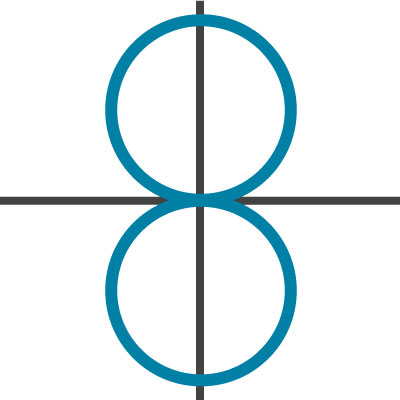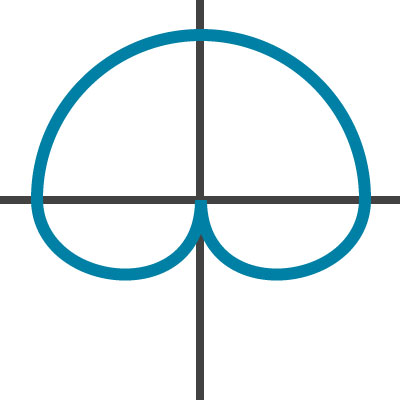Along with frequency response, average output level and max SPL, one of the most important factors in choosing a microphone for any application is its polar pattern, which illustrates how sensitive the mic is, or is not, to sound coming from different directions.
Polar patterns can be leveraged to hone in on a particular sound source, cancel out others, or take it all in equally and without prejudice. In this piece, we’ll run you through the six main polar patterns, making note of their advantages and typical applications.
Omnidirectional (or nondirectional)

Offering equal pickup from all directions, omnidirectional microphones are most frequently used as distant ambience mics or for overall capture of a physically larger and wider sound source, like a choir or orchestra. Omni microphones do not exhibit the bass boost of proximity effect and, for the most part, maintain a fairly even frequency response regardless of distance.
Do note that omnidirectional microphones are generally divided into two categories: free field and diffuse field.
- Free field microphones are designed to be used closer to the sound source for capturing more direct sound than ambient sound.
- Diffuse field mics are used for more distant pickup and have an intentional high frequency emphasis to make up for the presence that’s lost as you move the microphone further back.
Examples: Neumann M 50 and M 150, Earthworks QTC40, DPA 4006A, all measurement microphones
Bidirectional (or figure eight, figure-of-eight)

Found in a large majority of ribbon microphones and multipattern condensers, bidirectional is arguably one of the more useful (yet often overlooked) polar patterns to have at your disposal.
Bidirectional microphones have equal directional pickup on the front and rear of the microphone, with deep nulls on the top, bottom and sides created by having the rear of the microphone 180 degrees out of polarity with the front. These nulls can be used to cancel out unwanted bleed, particularly handy with acoustic singer-songwriter recording where the singer is playing guitar and singing at once.
With a bidirectional microphone aimed so that the “business end” points at the singer’s mouth and the null points at the guitar, you can achieve isolation that for all intents and purposes is as good as overdubbing the parts separately. Same deal with drums -- set a bidirectional condenser to peek over the rim of a snare drum with the nulls aimed at the hi-hat, rack tom, and bass drum. Voila! No more reaching for a gate or editing out bleed in between snare hits.
Examples: RCA 44BX, AEA R84, Beyerdynamic M 130
Cardioid

The most common polar pattern by a country mile, cardioid offers a unidirectional pickup that is more or less heart-shaped. With good rear rejection, cardioid minimizes the amount of bleed coming from behind the microphone and in many cases attenuates high frequencies from the sides.
By their nature, cardioid polar patterns exhibit significant proximity effect, though this is generally part of their appeal. A vocalist, bass drum or amplifier can take on the larger-than-life “Voice of God” quality thanks to the bass boost in line with moving the microphone closer and closer. Cardioid microphones are generally thought of as utility microphones that can be used in any and all applications with few tradeoffs.
Examples: Shure SM57, Electro-Voice RE20, Neumann U 47 fet
Hypercardioid

With the narrowest pickup of all the polar patterns, hypercardioid is a laser beam of directionality and is especially useful for tight live-sound applications where many musicians or amplifiers are crammed onto a smaller stage.
In the studio, you can pull a hypercardioid microphone back from the sound source for a more ambient sound, but still minimize unwanted bleed from nearby drums or amplifiers. While they do have a bit of rear pickup, which varies by model of microphone, it is nowhere near the sensitivity on the front of the pattern.
Examples: Audix OM5, Beyerdynamic M160
Supercardioid

The supercardioid polar pattern is something of a middle ground between cardioid and hypercardioid, and is most often seen in handheld vocal condenser mics where their notable rear pickup is less of an issue.
Examples: Shure Beta 87A, Neumann KMS 105, Audix VX5
Wide Cardioid (or subcardioid)

Almost exclusively seen in multi-pattern microphones and quite specialized, the wide cardioid polar pattern is unidirectional tending toward omnidirectional. Proximity effect is less of a factor here when compared to the other unidirectional patterns, and the wide cardioid pattern is most often used in distant/wide pickup applications which require a bit of isolation which omnidirectional mics simply cannot offer.
Examples: Sennheiser MKH 8090, Schoeps MK21 capsule
Multi-pattern Microphones
Ever since the release of the Neumann U 47 in 1947, audio engineers have enjoyed the luxury of having switchable or even continuously variable polar patterns without the need for swapping capsules. With the flick of a switch or spin of a dial, the user can fine tune the directionality and reach of the microphone, which also tends to change up the frequency response a bit and alter the tone in a way that’s significantly more natural sounding than using an equalizer downstream.
Examples: Neumann U 47, AKG C 414, Shure KSM44A, Telefunken AR-51
